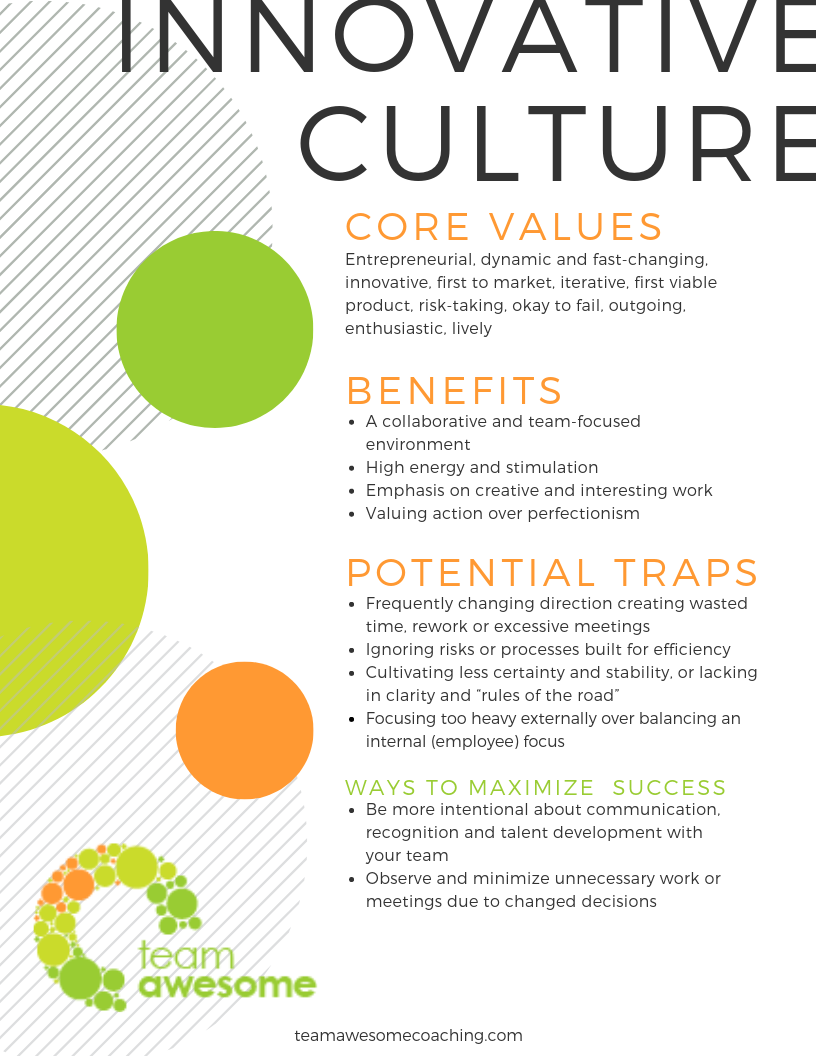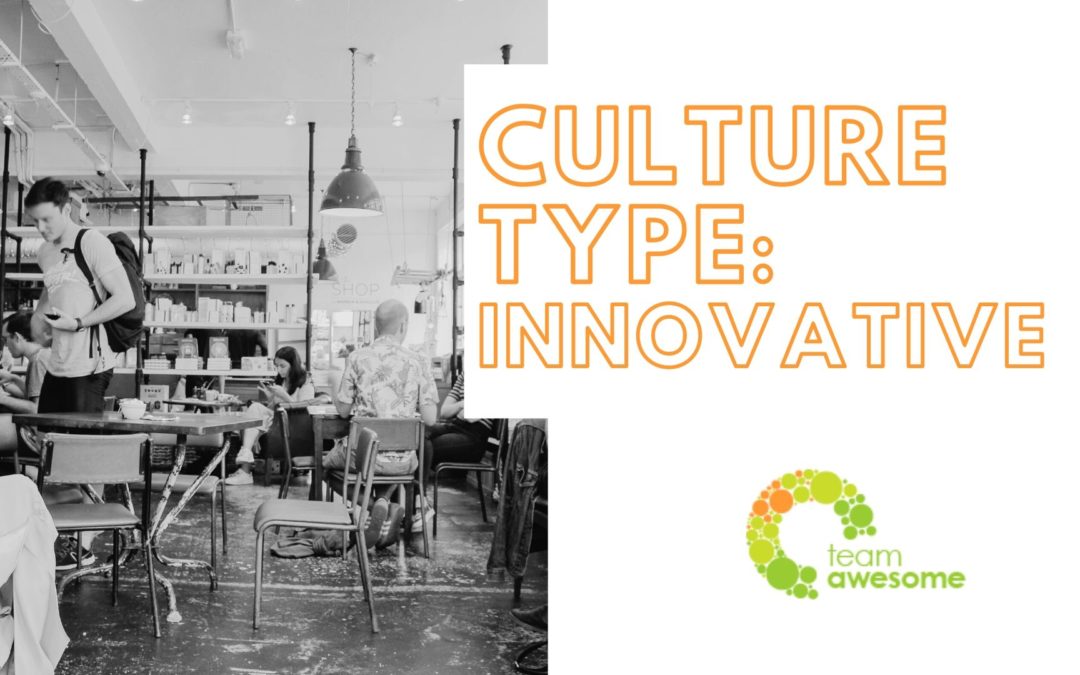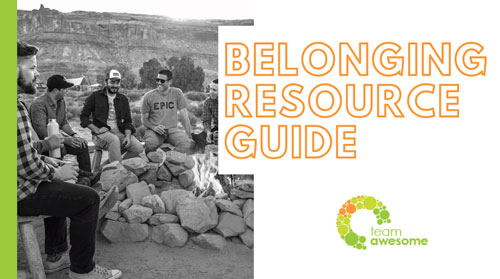As many of you are examining your culture this year, I wanted to offer you some broader perspective of what your company culture might look and feel like to your teams, and offer some very intentional ways to continue to develop your team culture into what you want to be. First, let’s cover a few principles to keep in mind when it comes to culture.
- EVERY organization of every size has a culture. It naturally exists, whether you are aware of it or not or whether you are doing anything about it or not. We must first come to terms with the fact that the question is not “if” you have a culture, but “what” that culture looks like.
- Every type of culture has some pros and cons. Just like as individuals, we cannot be all things to all people. The key is to have awareness of what type of culture your organization has, and then choose how you want to lean into your strengths or mitigate where you are getting stuck. No type is good or bad, better or worse.
- Leadership of the organization plays a large role into how the culture shows up. When you think of what type of culture your company has, think bigger picture in the overall sense, not just for your immediate business unit. Every organization will have elements of all culture types (and leaders with varying styles), but tend to have a primary culture type.
Here we have simplified styles into four culture types. If you have not already taking our quiz to find out your company’s culture type, you can take it here! Have fun, and hopefully this will provide you with some ideas and introspection about where to go next to cultivate your company culture with intention.
Here is one of the four culture types that we are focusing on today.
Innovative
Innovative cultures thrive on being entrepreneurial, dynamic and fast-changing. There is often a focus on being iterative and bringing first viable products to market. Innovative cultures are often customer-centric, focusing on what is going on for their audience and in the marketplace. There is often a healthy acceptance of risk-taking where if feels okay to fail. The feel of the group might be outgoing, enthusiastic and lively.
Some of the benefits of an Innovative culture include:
- A collaborative and team-focused environment
- High energy and stimulation
- Emphasis on creative and interesting work
- An avoidance of stalling over perfectionism
- High responsiveness to interesting new markets and opportunities
An Innovative culture might be getting stuck in these traps:
- Frequently changing direction creating wasted time, rework or excessive meetings
- Ignoring risks or processes built for efficiency
- Cultivating less certainty and stability, or lacking in clarity and “rules of the road”
- Focusing too heavy externally over balancing an internal (employee) focus
If this sounds like your culture, here are a few things you might try to overcome roadblocks:
- Be more intentional about communication, recognition and talent development with your team
- Observe and minimize unnecessary work or meetings due to changed decisions
Resources:
Enjoy these links to articles that will help you to:
- Solve the “death by meetings” approach
- Encourage communication when things are moving fast
- Focus on maximizing potential internally, not just with customers
Looking for some solutions to help your team?
- Try the Defining and Achieving Your Goals keynote to learn about how to clarify and crush goals
- For a more in-depth solution, try the Human Leadership Master Class
Thanks for checking out our culture type quiz and resources! Interested in seeing the other types? Check them out here:
Watch for my upcoming posts on these cultures:
- Achievement
- Traditional
About the author:
Katie Rasoul is the Chief Awesome Officer for Team Awesome, a leadership coaching and culture consulting firm. She is a TEDx speaker alumna, author of the best-selling book, Hidden Brilliance: A High-Achieving Introvert’s Guide to Self-Discovery, Leadership and Playing Big, and co-host of The Life and Leadership Podcast.
Find out more by visiting www.teamawesomecoaching.com or join the Team Awesome Community for awesomeness coming straight to your inbox. Follow Team Awesome on Instagram, Facebook and Twitter.




Recent Comments